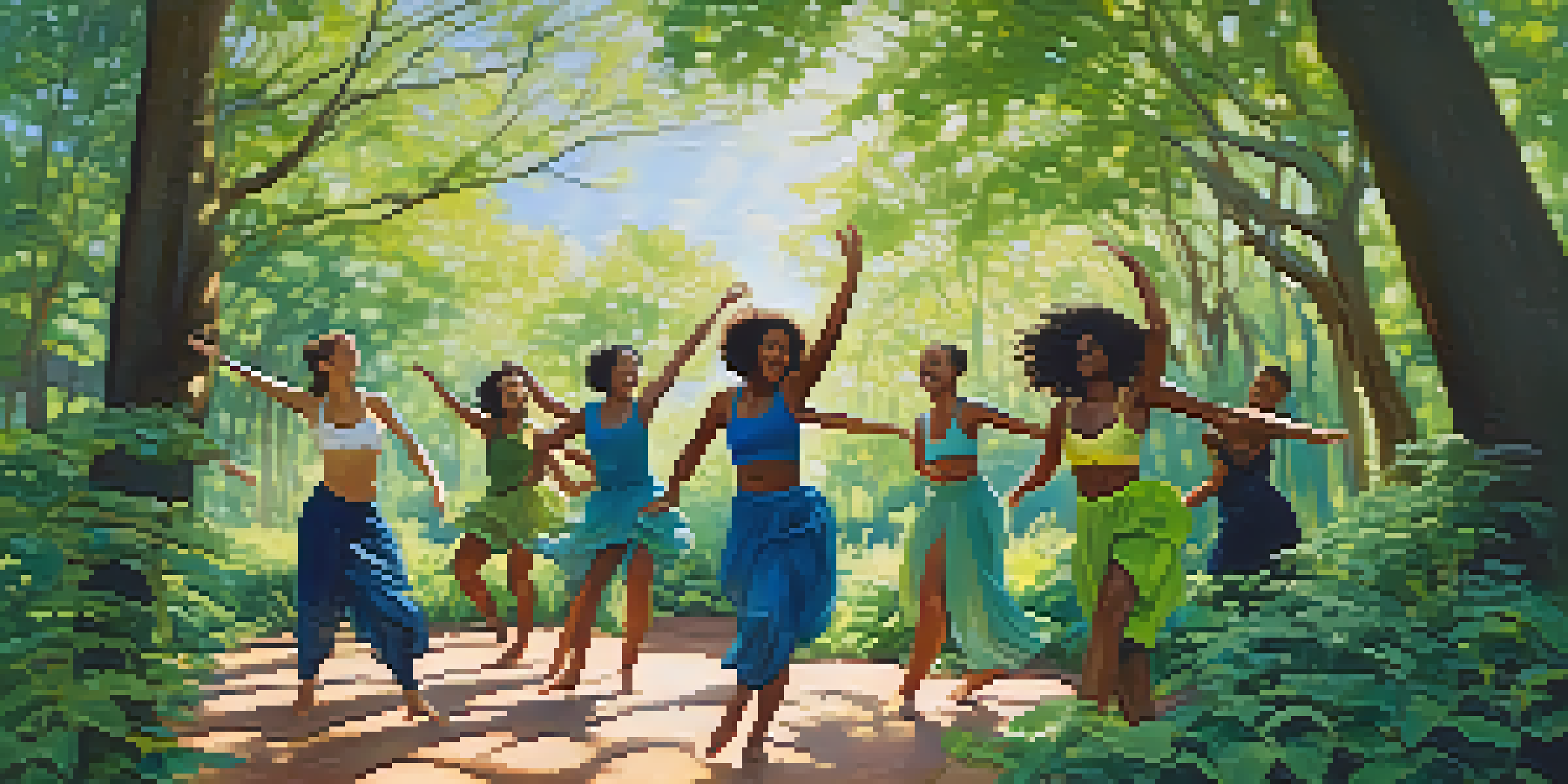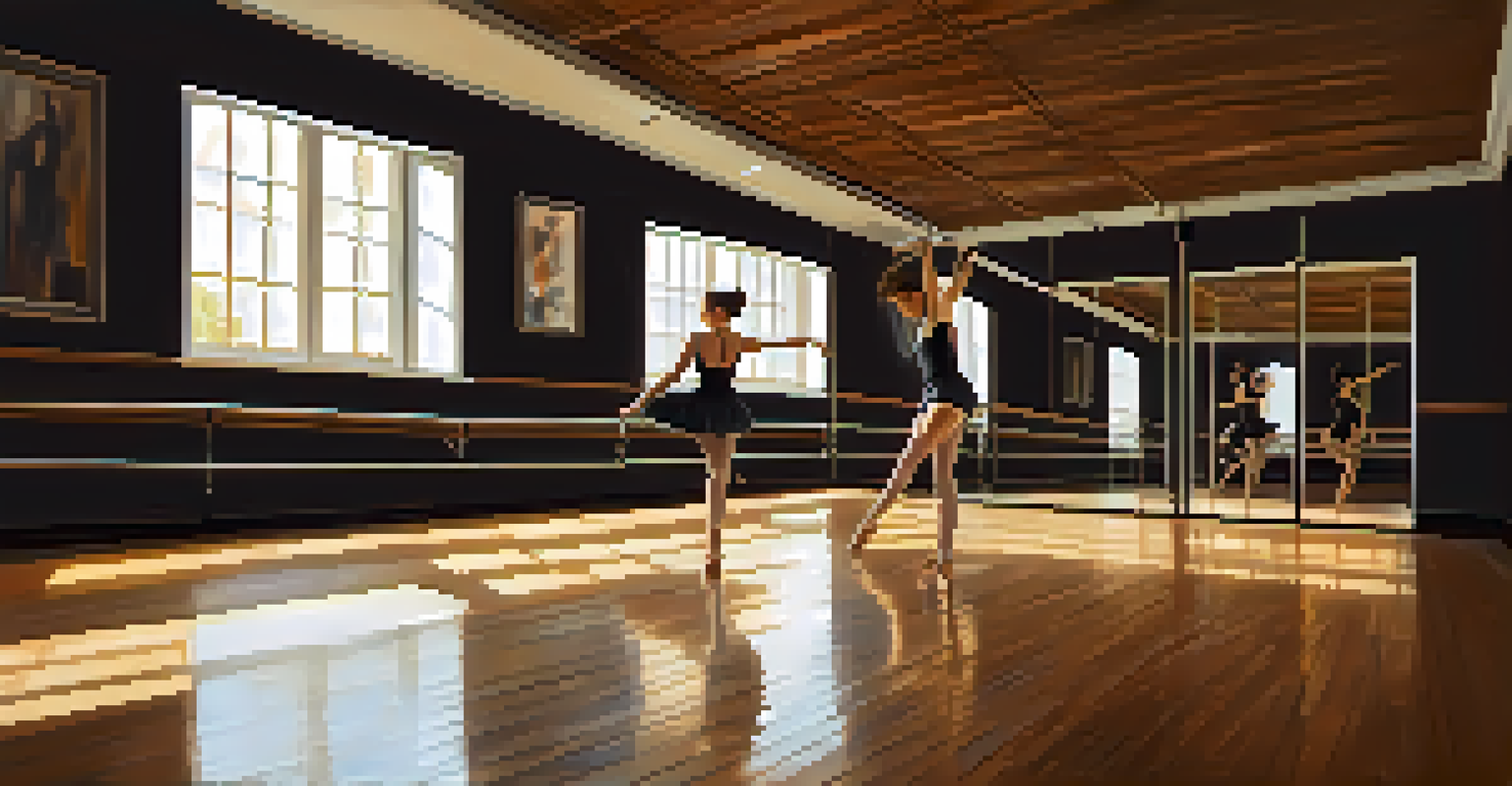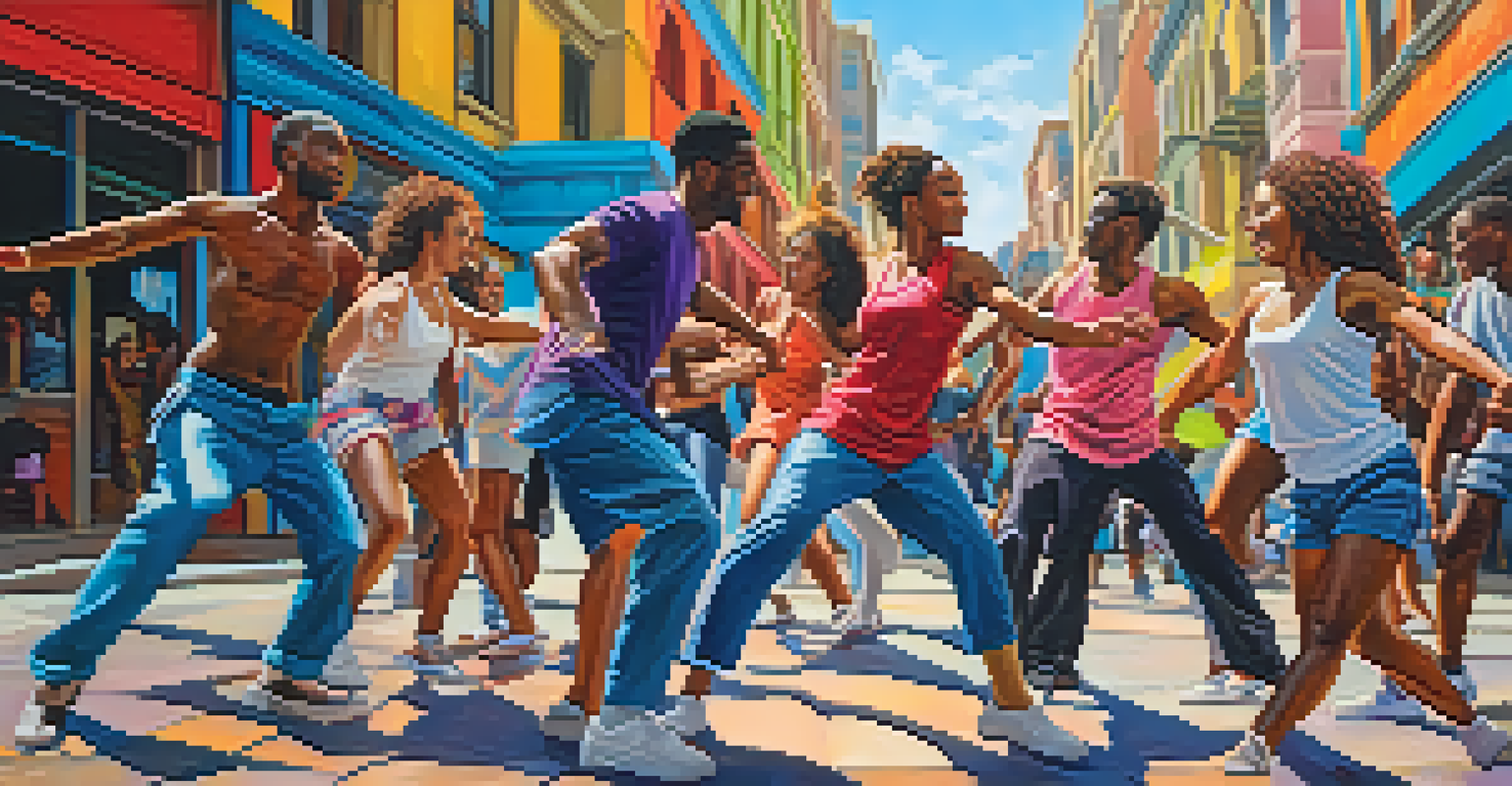Improvisational Dance: A Pathway to Personal Expression

What is Improvisational Dance and Why It Matters
Improvisational dance is a spontaneous form of movement that allows dancers to express their emotions and thoughts freely. Unlike choreographed dance, where every step is planned out, improvisational dance encourages you to move in the moment, responding to music, surroundings, and your own feelings. This form of dance is not just about technique; it’s about connecting with your inner self and expressing that connection outwardly.
Dance is the hidden language of the soul.
For many, this dance style serves as a form of therapy, breaking down barriers and helping individuals find their voice through movement. It creates a safe space to explore creativity without judgment, making it accessible to everyone, from beginners to seasoned dancers. In a world often filled with rigid structures, improvisational dance offers a refreshing escape where personal expression reigns supreme.
By engaging in this form of dance, participants often discover more about themselves, leading to personal growth and emotional release. It can be a powerful tool for building confidence and fostering a sense of community, as dancers often share their experiences and interpretations with one another. Ultimately, improvisational dance can transform the mundane into the extraordinary, offering a pathway to authentic self-expression.
The Psychological Benefits of Improvisational Dance
Engaging in improvisational dance has numerous psychological benefits that extend beyond the dance floor. Studies have shown that it can reduce stress, anxiety, and depression, as the act of moving freely allows individuals to release pent-up emotions. When you dance without a predefined structure, you tap into a state of flow, which is not only refreshing but also therapeutic.

Moreover, this dance form encourages mindfulness, helping dancers stay present and connected to their body and emotions. By focusing on the movements and the sensations they evoke, individuals can cultivate a deeper awareness of themselves and their surroundings. This mindfulness practice can lead to improved mental clarity and emotional well-being.
Improvisational Dance as Self-Expression
This dance form allows individuals to express their emotions and thoughts freely, fostering a deep connection with their inner selves.
Additionally, the improvisational aspect fosters creativity, which is essential for problem-solving in various aspects of life. When you learn to let go and embrace spontaneity in dance, you also develop a mindset that welcomes flexibility and innovation in other areas, whether it’s in your career or personal relationships. Ultimately, improvisational dance can be a profound catalyst for personal transformation and emotional healing.
Finding Your Unique Style Through Improvisational Dance
One of the most exciting aspects of improvisational dance is the opportunity to find and express your unique style. Each dancer has their own way of moving, influenced by their background, emotions, and experiences. As you engage with this form of dance, you'll likely discover movements that feel natural and authentic to you, allowing your personality to shine through.
The only way to make sense out of change is to plunge into it, move with it, and join the dance.
Exploring various genres of music and different environments can further enhance your improvisational experience. For instance, dancing in nature might inspire more fluid and earthy movements, while a vibrant urban setting could evoke sharper, more energetic expressions. By experimenting with different influences, you can cultivate a style that truly reflects who you are.
Moreover, sharing your improvisational dance with others can lead to collaborative growth. When you dance alongside others, you not only learn from their movements but also contribute to a shared experience that enriches everyone involved. This exchange of styles and ideas can inspire you to evolve and adapt, creating a dynamic and ever-changing approach to your personal expression.
Improvisational Dance as a Form of Communication
Improvisational dance transcends language, serving as a powerful form of non-verbal communication. When words fall short, movement can express what we feel deep inside—joy, sorrow, anger, or love. This ability to communicate through dance can strengthen connections with others, as it allows for deeper, more authentic interactions.
In group settings, improvisational dance fosters a sense of trust and collaboration. Dancers often respond to each other’s movements, creating a dialogue that is both intuitive and spontaneous. This dance conversation can lead to profound moments of connection, as participants learn to read each other's energy and emotions through movement.
Psychological Benefits of Dance
Engaging in improvisational dance can significantly reduce stress and anxiety while promoting mindfulness and emotional well-being.
Additionally, improvisational dance can be a way to share stories and experiences that may be difficult to articulate verbally. By embodying feelings and narratives through movement, dancers can convey complex emotions and situations, offering insight and understanding to both themselves and their audience. This unique form of expression enriches our ability to connect on a human level.
The Role of Music in Improvisational Dance
Music is a vital element in improvisational dance, serving as both a backdrop and a source of inspiration. The rhythm, melody, and dynamics of a piece can evoke a wide range of emotions, guiding dancers in their movements. When you dance improvisationally, you often find yourself responding to the music in real-time, creating a visceral connection between sound and movement.
Choosing the right music can significantly enhance your improvisational experience. Whether it’s classical, jazz, electronic, or world music, each genre brings its own flavor and energy to the dance. Experimenting with different styles can help you discover what resonates with you and inspires your movement, allowing for a richer and more fulfilling dance experience.
Moreover, the interplay between music and movement can be a beautiful exploration of rhythm and flow. As you become more attuned to how the music influences your body, you’ll find yourself moving in ways that feel organic and liberated. This harmonious relationship between dance and music not only enhances your performance but also deepens your overall sense of joy and expression.
Improvisational Dance as a Community Builder
Improvisational dance has a unique ability to bring people together, creating communities built on shared experiences and expression. Dance classes, workshops, and jam sessions provide spaces for individuals to connect, collaborate, and support one another in their creative journeys. In these environments, dancers often form bonds that extend beyond the dance floor, fostering friendships and a sense of belonging.
Participating in a community of improvisational dancers can enhance your skills and confidence. As you share ideas and movements with others, you gain new perspectives and insights that can enrich your own practice. This collaborative spirit encourages everyone to embrace their individuality while also celebrating the diversity of styles and expressions within the group.
Community Building Through Dance
Improvisational dance creates a sense of belonging by bringing people together to share experiences and support each other's creative journeys.
Moreover, the inclusive nature of improvisational dance means that anyone can join, regardless of skill level or experience. This open-door policy creates a welcoming environment where everyone can feel safe to express themselves freely. In essence, improvisational dance acts as a catalyst for community building, uniting people through the universal language of movement.
Getting Started with Improvisational Dance
If you’re eager to dive into the world of improvisational dance, getting started is easier than you might think! Begin by finding a comfortable space—whether it’s your living room, a dance studio, or a park—where you can move freely without distractions. All you need is a willingness to explore and express yourself through movement.
Consider starting with some music that inspires you, and allow yourself to respond to it without overthinking. You might find it helpful to set a timer for a few minutes and simply let your body move as it wishes. Remember, there’s no right or wrong way to dance; the goal is to connect with your body and emotions in the moment.

Lastly, don’t hesitate to seek out classes or workshops in your area. Many dance studios offer improvisational dance sessions, which can provide guidance and inspiration as you develop your unique style. Embrace the journey, and remember that each movement you make is a step towards greater self-expression and creativity.